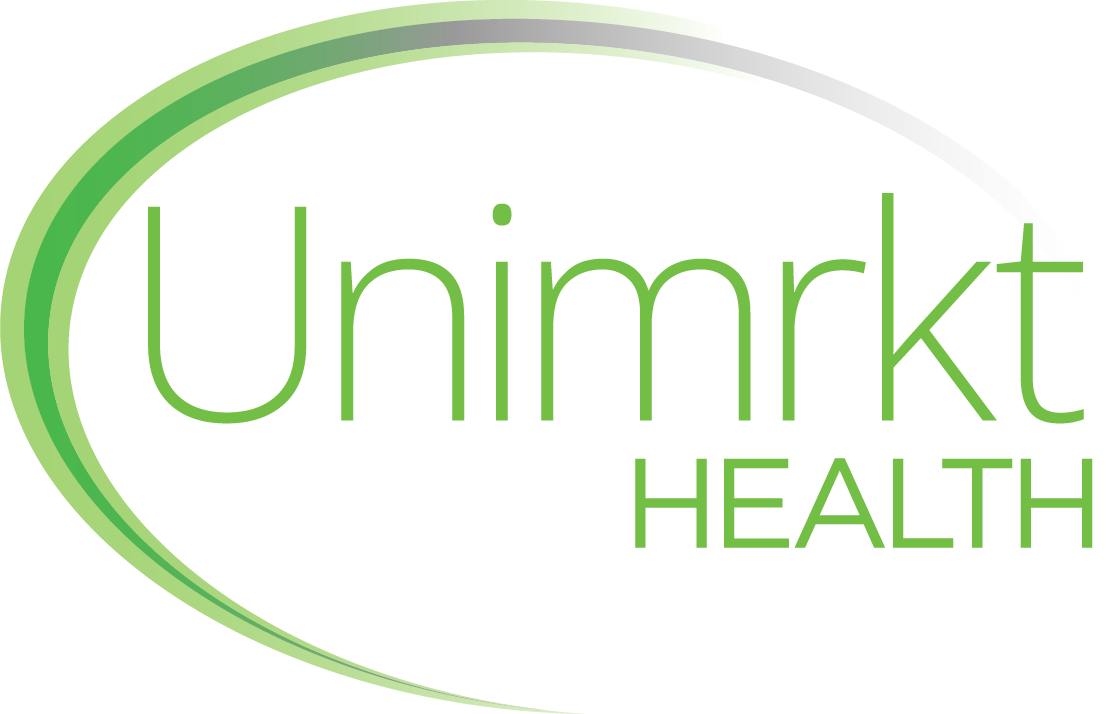Verbatim Coding: Accurately Capturing Customer Responses in Open-Ended Market Research
- Unimrkt Healthcare » Blog » Verbatim Coding: Accurately Capturing Customer Responses in Open-Ended Market Research
Whether you’re improving healthcare products, evaluating advertising impact, or gauging patient satisfaction, capturing authentic feedback in patients’ own words is invaluable. But how do you convert that open-ended feedback into meaningful, actionable data? The answer lies in verbatim coding or open-end coding, a critical process for translating qualitative data into structured one.
In this blog, we’ll explain what verbatim coding is, why it’s crucial in patient surveys, and the best practices for implementing it in healthcare research.
What is Verbatim Coding in Market Research?
Verbatim coding is the process of translating open-ended responses in market research, such as surveys or interviews, into standardized codes. It involves reviewing and categorizing raw patient responses, often unstructured, into themes, topics, or categories that can be analyzed to extract meaningful patterns.
Verbatim coding ensures accurate capture and analysis of patient responses, making research tools more effective. The goal is to ensure that every response, no matter how detailed or unique, is interpreted in a way that is consistent, reliable, and aligned with the objectives of the research.
With verbatim coding, it’s not just about collecting data; it’s about capturing the nuances of patient responses to inform decision-making and improve healthcare services.
The Benefits of Verbatim Coding for Open-End Market Research and Patient Surveys
When it comes to patient surveys, verbatim coding offers several key benefits:
- Accurate Data: By capturing patients’ own words, verbatim coding provides a rich, detailed view of their experiences, attitudes, and sentiments, allowing healthcare providers to understand the nuances of patient feedback.
- Uncover Hidden Themes: Open-ended responses can often capture data that closed-ended questions might miss, such as emerging trends, unique concerns, or areas for improvement.
- Enhanced Data Reliability: Well-executed verbatim coding ensures that qualitative data is structured and standardized, making it easier to process vast amounts of data.
- Improved Patient Engagement: Accurately capturing patient sentiments allows healthcare providers to make data-backed decisions that align with patient needs, improving patient satisfaction and engagement.
By relying on survey programming services for verbatim coding, healthcare providers can uncover deeper market data into patient satisfaction, pain points, and overall experiences, helping them refine their services and strategies.
Best Practices for Open-End Coding in Market Research
Effective verbatim coding requires skill, precision, and an understanding of both the qualitative data and the research objectives. Here are the best practices to ensure that your verbatim coding process is accurate, effective, and reliable.
1. Understand the Nuances of Qualitative Data
The first step in successful verbatim coding is recognizing the inherent complexities of qualitative data. Unlike quantitative data, qualitative data is subjective and often open to interpretation. The key to successful verbatim coding is understanding the context of the responses and the sentiments behind the words.
Best practices:
- Gauge sentiment: Identify whether responses are positive, negative, or neutral, and consider the intensity of the sentiment.
- Focus on key themes: Look for recurring themes or areas where patients consistently provide feedback.
- Capture context: Ensure that the meaning behind each response is preserved to avoid misinterpretation.
2. Create Initial Codes
Once the responses are collected, it’s time to begin the coding process. This step involves assigning initial codes to the responses based on recurring themes, words, or phrases. You can use different approaches to create these codes, such as inductive coding (letting the data guide the coding process) or deductive coding (using predefined codes based on the research objectives).
Best practices:
- Group responses by common themes: Create codes that reflect the key topics or issues that patients are discussing.
- Include diverse responses: Make sure to code responses that capture both expected and unexpected answers.
3. Align Codes to Responses
The next step in open end coding in market research is aligning the codes to the actual responses in a way that reflects the meaning behind the patient’s words. Each response may align with multiple codes depending on its complexity and the range of issues it addresses.
Best practices:
- Avoid over-coding: Stick to the most relevant codes and ensure each response is associated with the correct code.
- Use precise language: The codes should be clear and precise, accurately representing the content of the responses.
4. Revisit Codes and Validate
Once the initial codes have been applied, it’s important to revisit the codes and validate their accuracy. This phase ensures consistency across all responses and that the final codes accurately reflect the data.
Best practices:
- Review the codes: In larger projects, it’s beneficial to have more than one coder review the responses to ensure consistency.
- Refine the coding framework: As you process more responses, refine and adjust the codes as needed to improve accuracy.
5. Final Stage: Analysis and Reporting Findings
The final stage involves analyzing the coded data and reporting the findings in a meaningful way. This involves organizing the coded responses into categories and drawing conclusions based on the extracted data. The analysis should focus on identifying key trends, actionable insights, and recommendations that can guide decision-making.
Best practices:
- Use data visualization tools: Data visualization tools, such as charts or heatmaps, help to present and interpret coded data visually, making data clearer for decision-makers.
- Ensure clarity in reporting: Your findings should be clear and understandable, making it easy for stakeholders to interpret and take action.
Now that we’ve covered best practices for verbatim coding, it’s important to consider the different methods available. Let’s take a look at manual coding and AI coding to determine which approach fits your project needs.
Choosing between Manual Coding vs AI Coding in Open-End Market Research
When it comes to open-end market research, there are two primary methods for verbatim coding: manual coding and AI-powered coding. Each approach has its advantages and challenges, and the choice between the two depends on factors such as data volume, budget, and the need for precision.
AI Coding
AI-powered coding uses algorithms to analyze and categorize responses automatically. This method is much faster than manual coding and can handle large datasets efficiently, making it useful for high-volume surveys or market research projects. However, there are major caveats with AI-coding.
The Limits of AI-Powered Coding
- Surface-level understanding: AI may miscode responses involving medical terminology, patient emotions, or regional expressions.
- Lack of adaptability: AI tools are only as good as their training data. If new themes emerge mid-project, AI systems often require retraining, delaying results.
- Loss of nuance: In areas like patient satisfaction, disease burden, or treatment perception, AI can miss the very insight researchers are looking for.
Manual Coding: The Human Edge That Healthcare Demands
Manual coding involves trained coders reading each individual response and applying codes based on context, sentiment, and subject-matter understanding. In healthcare, where a patient’s words can carry complex emotional and clinical weight, this human-centred approach is invaluable.
Why trust manual coding:
- Unmatched accuracy: Human coders understand the emotional, medical, and cultural nuances in responses that AI can easily misinterpret or miss entirely.
- Context-aware decisions: Unlike automated tools, manual coders adapt to new themes, language subtleties, and emerging trends in real-time, which is essential when dealing with ever-evolving healthcare topics.
- Deeper sentiment analysis: Human coders can pick up on tone, implied meanings, and emotional cues. It is especially critical in sensitive topics like chronic illness, mental health, or end-of-life care. AI often misses these layers of sentiment.
- Better interpretation of medical jargon and patient language: Healthcare responses often mix technical terms with colloquial language. Manual coders are trained to bridge the gap, accurately interpreting hybrid expressions like “BP med making me drowsy” or “sugar’s acting up again”.
- Cross-Cultural Sensitivity: In multi-country healthcare studies, cultural idioms and localized healthcare experiences vary. Manual coders with regional familiarity can ensure accurate, culturally appropriate categorization.
In healthcare research, where precision, empathy, and context are critical, manual coding remains the gold standard, especially when interpreting complex patient feedback. While AI tools may support high-volume analysis, leading firms like UnimrktHealth rely on manual CATI-based coding to deliver the accuracy, flexibility, and trust that clients expect.
Simplify Verbatim Coding with Healthcare Research Support
In healthcare market research, accuracy is key. Verbatim coding plays an essential role in translating patient feedback into rich and accurate data. To ensure consistent, high-quality data, it’s important to work with a reliable healthcare research firm that has the right tools and expertise to handle this process efficiently. Partnering with an experienced firm not only streamlines the coding process but also ensures you gain rich data that drive better decision-making and improve patient outcomes.
Get High-Quality Verbatim Coding with Unimrkt Healthcare
If you’re ready to leverage the power of verbatim coding for your surveys, get in touch with Unimrkt Healthcare. We specialize in providing accurate and reliable survey programming and patient survey services. With years of experience in healthcare research, we help healthcare providers refine their services through rich market data collection and research support functions. Our commitment to quality is reflected in our ISO 20252 and ISO 27001 certifications, ensuring that we adhere to the highest standards of data security and ethical research practices.
With Unimrkt Healthcare, you gain access to comprehensive survey programming services for precise data collection and analysis that transforms raw responses into actionable recommendations. To find out more about our research support services, contact us at +91-124-424-5210, +91-9870-377-557, or sales@unimrkthealth.com. Alternatively, fill out our contact form, and our team will get back to you promptly.
Recent Posts
- From Concept to Market: Using Research to Ensure Animal Health Product Acceptance
- Leveraging Primary Market Research to Drive Pharma Brand Repositioning
- Precision Insights for Precision Medicine: Market Research to Drive Personalized Healthcare
- The Sales Head: Conducting Research with Star KOLs in the Pharmaceutical Industry
- Business Research Methodologies in Healthcare: 7 Desk-Based Approaches That Work
Archives
- November 2025
- October 2025
- September 2025
- August 2025
- July 2025
- June 2025
- May 2025
- April 2025
- March 2025
- February 2025
- January 2025
- December 2024
- November 2024
- October 2024
- September 2024
- August 2024
- July 2024
- June 2024
- May 2024
- April 2024
- March 2024
- February 2024
- January 2024
- December 2023
- November 2023
- October 2023
- September 2023
- August 2023
- July 2023
- June 2023
- May 2023
- April 2023
- March 2023
- February 2023
- January 2023
- December 2022
- November 2022
- October 2022
- September 2022
- August 2022
- July 2022
- June 2022
- May 2022
Quick Enquiry
Customer Service, We Make it Better
Related Posts:
Let's Connect
Please, fill in the form to get in touch!



